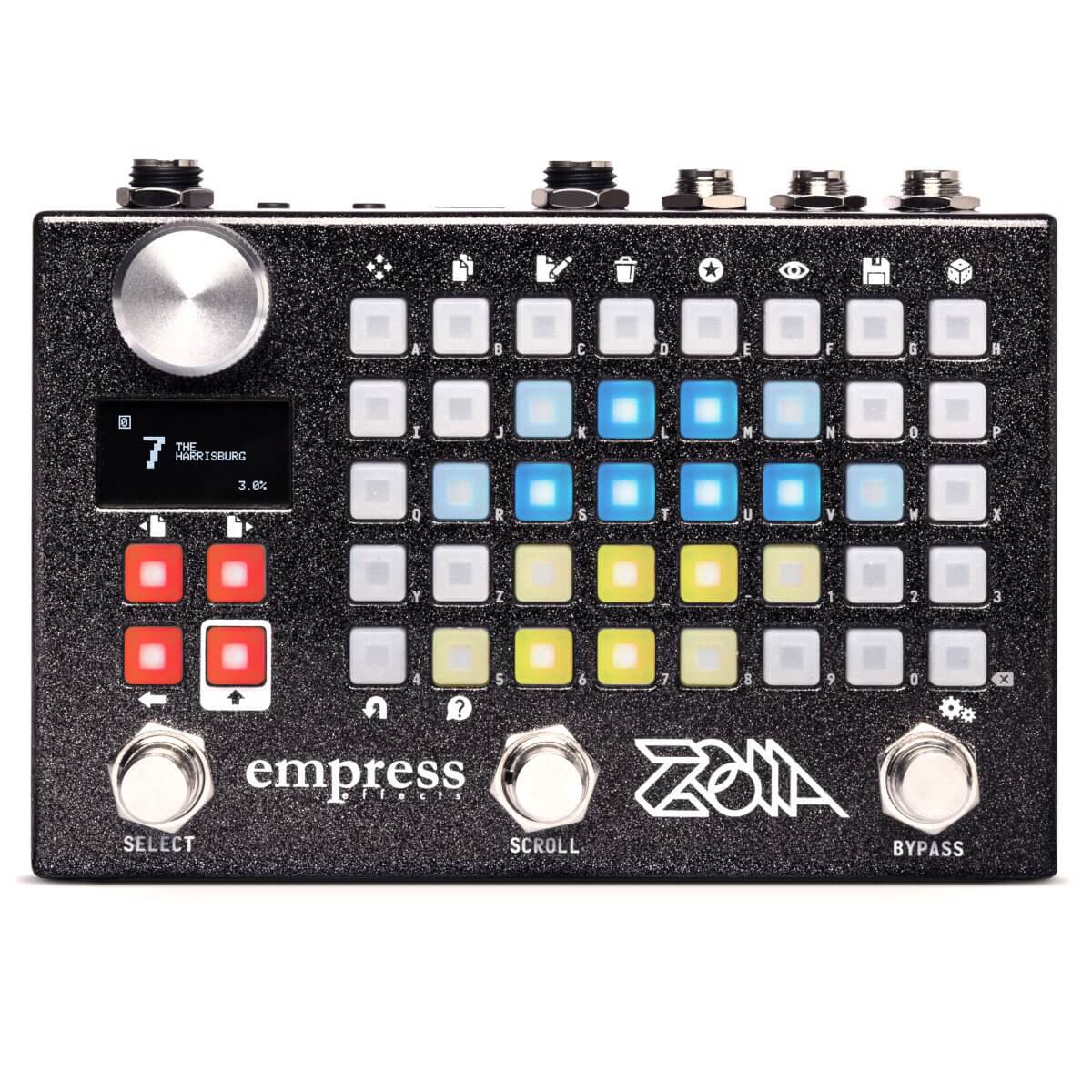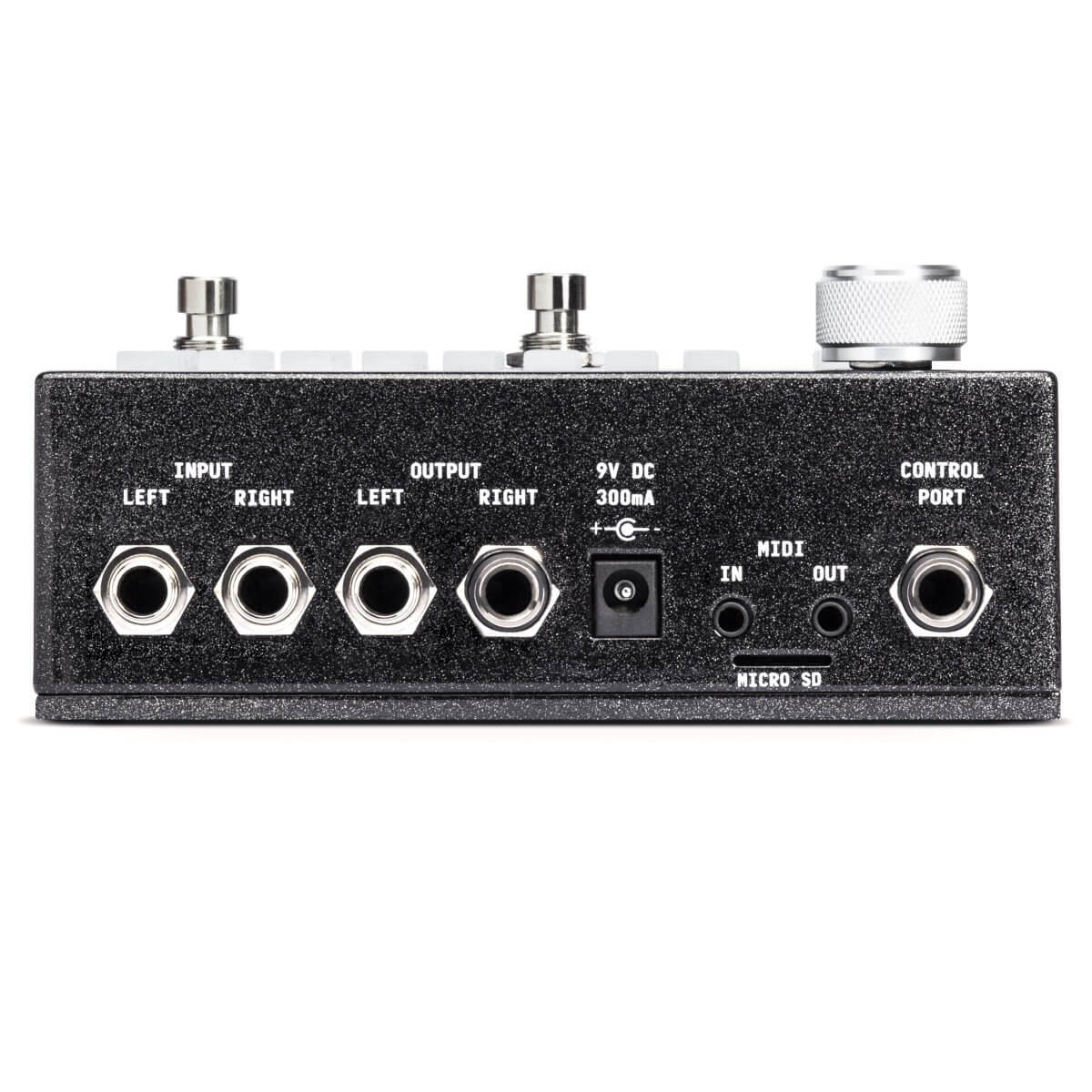Empress Effects is a renowned effects pedal maker. But with ZOIA, Empress attempts to combine instrumental effects with modular hardware and software. DJ Pangburn explored the ZOIA as both an effects unit and modular synthesizer. Here is what he has to say.
Empress Effects is, like Earthquaker Devices and Strymon, one of the premiere effects pedal makers of the boutique market. Empress’s Reverb pedal matches up against Strymon’s Big Sky, while the Nebulus is worthy competitor to Earthquaker Devices’ multi-FX pedal experiments. With ZOIA, released in 2019, however, Empress ups the ante, going far beyond mere instrument effects by combining this category with hardware and software modular systems. And doing so, the boutique company has produced something truly unique.
At the outset, it should be stated that modular effects aren’t completely novel. In 2015, Pennsylvania-based synthesizer company Pittsburgh Modular released the Patch Box, a patchable guitar pedal that fused the stompbox with the Eurorack module standard. And the various iterations of the Korg Kaoss Pad have offered, with the X-Y graph, a way of modulating effects in real-time.
Modular Hardware Meets Modular Software
First, it’s important to understand that the ZOIA is not just an effects pedal. But, if you are a guitar or keyboard player—or some other type of instrumentalist planning to run your signal through the unit—understand that the ZOIA radically rethinks the presentation of the effects pedal, to say nothing of the system that lies under its hood.

While it takes inspiration from Eurorack modules, in the sense that it offers tactile patching, it really doesn’t fit neatly in this category. Obviously, there are no patch cables. Instead, there are color-coded push buttons that one uses to patch the effects in modular fashion. But, ZOIA doesn’t just take inspiration from hardware modular—it owes a clear debt to modular software like MaxMSP and Pure Data; systems in which users create (code) modules, and “patch” them together on the software interface.
So, ZOIA is best thought of as a hybrid of effects pedal, modular (patch cable-less) synth, and modular soft synth. This hybridity makes it incredibly deep and powerful, but also a bit difficult to wrap your brain around at first. It doesn’t immediately behave like either an effects unit or modular synthesizer. To use it, one has to think of these various categories in slightly different ways. That is to say, there is a learning curve.
Most immediately, it will appeal to experimental synthesists and guitarists. And while it could make its way into many people based on its depth, it will likely become a tool for the most adventurous electronic musicians, irrespective of genre.
ZOIA: The FX Pedal
Let’s first take a look at ZOIA as an FX pedal. First of all, since it is a hybrid of three different things, we should note that even when it is in FX mode, ZOIA is a modular effects system. In other words, one must create audio ins and outs (mono or stereo), and then create a “patch” to connect and complete the effect. Indeed, one can do this several times over, allowing users to fashion modular multi-FX chains of their own choosing.
To create a multi-FX chain, users select from a menu of effects. For instance, one could create a modular multi-FX system that includes spring reverb, tape delay, and vibrato. ZOIA makes the selection of effects fairly easy: users simply scroll the menu of effects, load plate spring reverb, tape delay, and vibrato. Each effect has a certain set number of effects, parameters of which can be tweaked by pressing each of the dedicated buttons, and moving the ZOIA’s rotary knob. Each effect is color-coded, which users can change to their liking.
To complete the multi-FX chain, users must add either ins and outs (again, mono or stereo) through which an instrument signal will run in and out of the effects chain. Empress makes this pretty easy: one simply presses the left audio in and then taps the left audio out, which is then repeated for the right channel.
Empress Effects has produced something truly unique
Unlike most modular hardware systems, Empress has patch memory. This allows ZOIA users to save the effects chains that create as user presets, which they can call up quickly, but also tweak in the future and save to a different patch.
ZOIA: The Hybrid Modular Synth
One of the other great treats of the ZOIA is the ability to make a synthesizer. Think of it like moving modules in and out of Eurorack system, or of programming modules in the MaxMSP or Pure Data environments. Electronic musicians who use hardware and software modular will probably adapt quickly to the ZOIA’s workflow, but this shouldn’t deter total novices. Indeed, the ZOIA could potentially serve as a nice entry point to both modular worlds.
ZOIA features the modules found in any basic synthesizer, including sections for: oscillators, a VCA (Voltage Controlled amplifier), filter (with cutoff and resonance), an ADSR section, FX, a grid keyboard, and sequencer (more on that below). In creating a modular synthesizer on ZOIA, users are essentially putting the modules together to create a tone, which can be tweaked with various parameters and effects. To play the synthesizer, users can create a grid keyboard with the number of keys they prefer. They can also create a sequencer to program step sequences of various lengths (more on that below).
Again, this step-by-step process of constructing a modular synth will be familiar with modular hardware and software users. But, for those coming to ZOIA from the world of guitar effects, or just from using standard keyboard, tabletop, or rack synthesizers, ZOIA will require a bit of patient study.
Once users wrap their heads around ZOIA’s modular effects and synthesizer functions, they more than likely be creatively inspired. Users will also likely be thankful that Empress decided to create something so novel and, indeed, fun. One could well imagine ZOIA appealing to guitarists like My Bloody Valentine’s Kevin Shields or Radiohead’s Ed O’Brien; but, it’s also a multi-tasking machine (more on this below) that has instant appeal for this generation’s electronic musicians.
Other Functions: Looper and Granular Synth
Empress gave ZOIA even deeper functionality than effects processor and hardware/software modular synthesizer. It also can function as a looper and granular synthesizer.
ZOIA’s Looper module allows users to create not just one loop, but a string of triggered loops. As with ZOIA’s other functions, users have to create audio ins and outs, and connect the looper modules, allowing them to control the loop parameters, reverse the loop, but also add LFOs and effects.
The looper module is quite deep and capable, and definitely rewards user experimentation. Not everyone will use the ZOIA as a looper, but it’s certainly nice to have the option, if one is so inclined. Beyond guitarists, the looper will likely hold some appeal for electronic musicians like Nils Frahm, whose music is very loop-based.

The Granular module, which Empress released in the ZOIA 1.03 firmware update, allows users to create a granular synthesizer. What is a granular synth? Like sample-based electronic instruments, granular synths use samples, but very short ones—typically, 1 to 50ms in length, which are then randomly moved around to create uniquely evolving sounds.
ZOIA’s Granular module functions in the same way. Users can tweak grain size, position, density, texture, and speed/pitch. As with ZOIA’s other functions (FX, modular synth, and looper), users can apply effects and LFOs to the signal chain, allowing them to further augment the sound granules. Granular synthesis is pretty niche, making it a perfect feature for artists working on the frontiers of music.
Final Verdict
As we’ve said many times over now, ZOIA is a hybrid sound machine. While it is clearly a jack of all trades, one would be foolish to call it a “master of none”. ZOIA can be what you want it to be for whatever type of music you make. And that, as far as we are concerned, is creative power and inspiration.
Is it easy to use? No—at least not at first. Whatever functions one plans to use (FX processor, modular synth, looper, or granular synth), the ZOIA has a bit of a learning curve.
The good thing is that once users understand the ZOIA’s general workflow, moving from creating FX chains to modular and then granular synths will become easier. In fact, it might even make sense to start with the FX module to get an understanding of how the ZOIA operates, then move onto the more difficult functionality found in the modular, granular, and looper functions.
If you’re looking for an inspiring piece of kit, the ZOIA is it.
